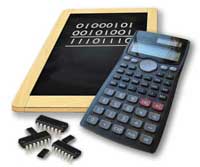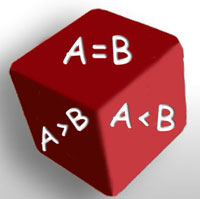Module 4.0
Introduction to Combinational Logic
- Section 4.0 Introduction to Combinational Logic.
- Section 4.1 Binary Arithmetic Circuits.
- • Half Adder.
- • Full Adder.
- • Parallel Adders.
- • Logic Circuit Simulation.
- • Twos Complement Overflow.
- • Carry Look Ahead Adders.
- Section 4.2 Data-Select and Multiplexing.
- • Basic data−select and multiplexing circuits.
- • Multiplexing.
- • Demultiplexing.
- • Multi−bit multiplexers.
- • Address Decoding.
- • Multiplexer Simulation.
- Section 4.3 Binary Comparators.
- • Equality Comparators.
- • Magnitude Comparators.
- • 4−Bit Magnitude Comparators.
- • Cascaded Comparators.
- Section 4.4 Encoders and Decoders
- • Priority encoders.
- • Diode matrix encoders.
- • Logic decoders.
- • 74 Series decoders.
- • Address decoders.
- • Simulating Encoders and Decoders.
- Section 4.5 Combinational Logic Quiz.
- Test your knowledge of Combinational Logic.
Binary Arithmetic

Combinational logic has many uses in electronic systems. It is used to carry out the essential arithmetic, not only in computers and calculators, but also in navigation systems, robots and many other types of automatic machinery. However complex such calculations need to be, they all depend on some basic combinational logic circuits to carry out binary addition and subtraction. This arithmetic is discussed in Digital Electronics Module 1 ‘Number Systems’
Logical Decisions

Mathematics and logical decision making also uses combinational logic in the form of Comparators, described in Module 4.3. These circuits decide whether one value is the same, larger or smaller than another value.
Data Routing

After making a logical decision, data may need to be routed to different parts of the electronic system, this routing is controlled by more combinational logic circuits such as the data selectors, multiplexers and demultiplexers described in Module 4.2.
Encoding and Decoding

When connecting a logic circuit with the outside world, the incoming information from a keyboard or other input device will almost invariably need to be changed (encoded) into an appropriate binary form. Also before binary data produced by the digital system can be used by an output device, such as a display, it must be decoded into a form that can be used by the display. Encoders and decoders used for such jobs are also combinational logic circuits, and are described in Module 4.4.


